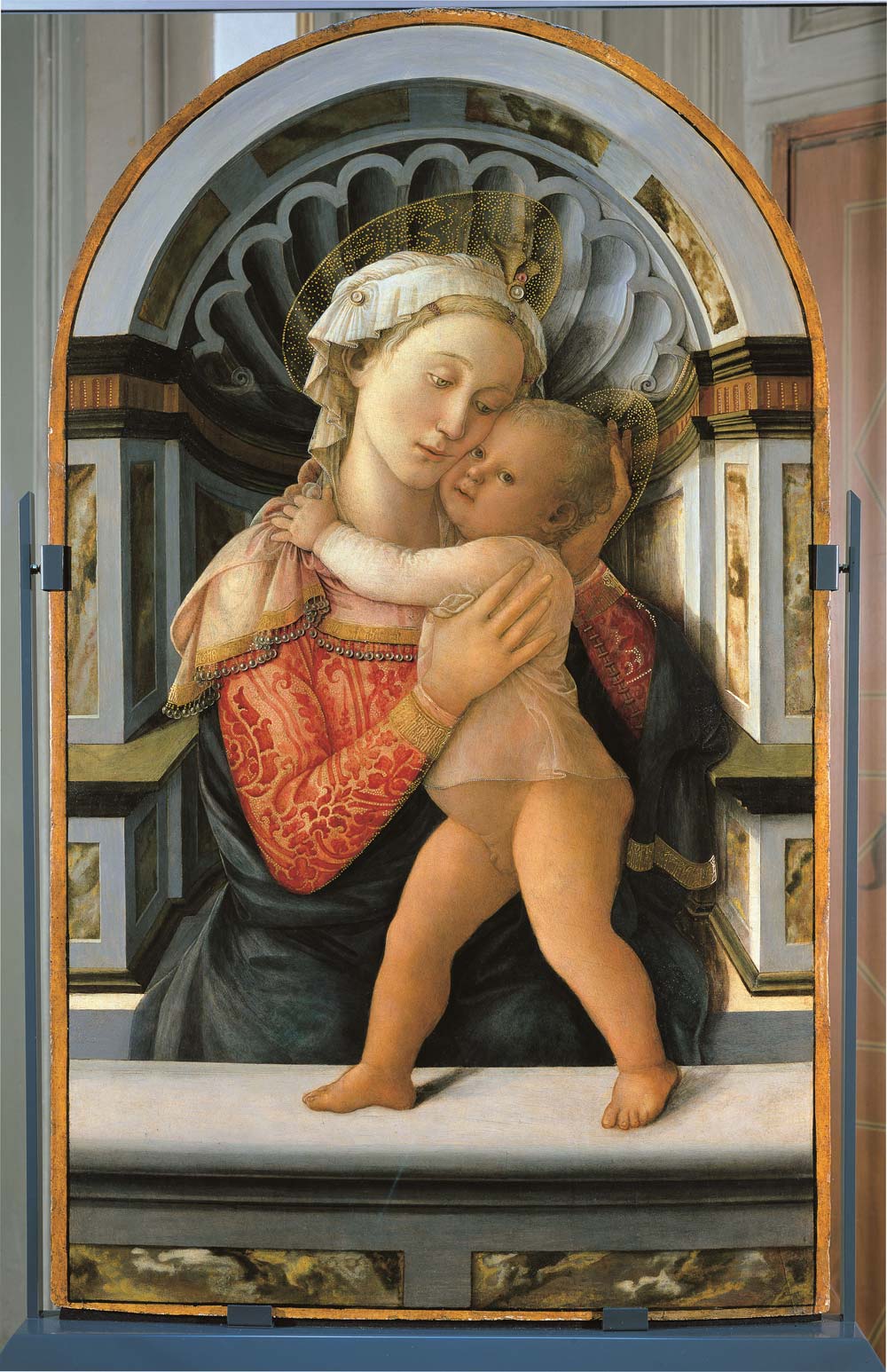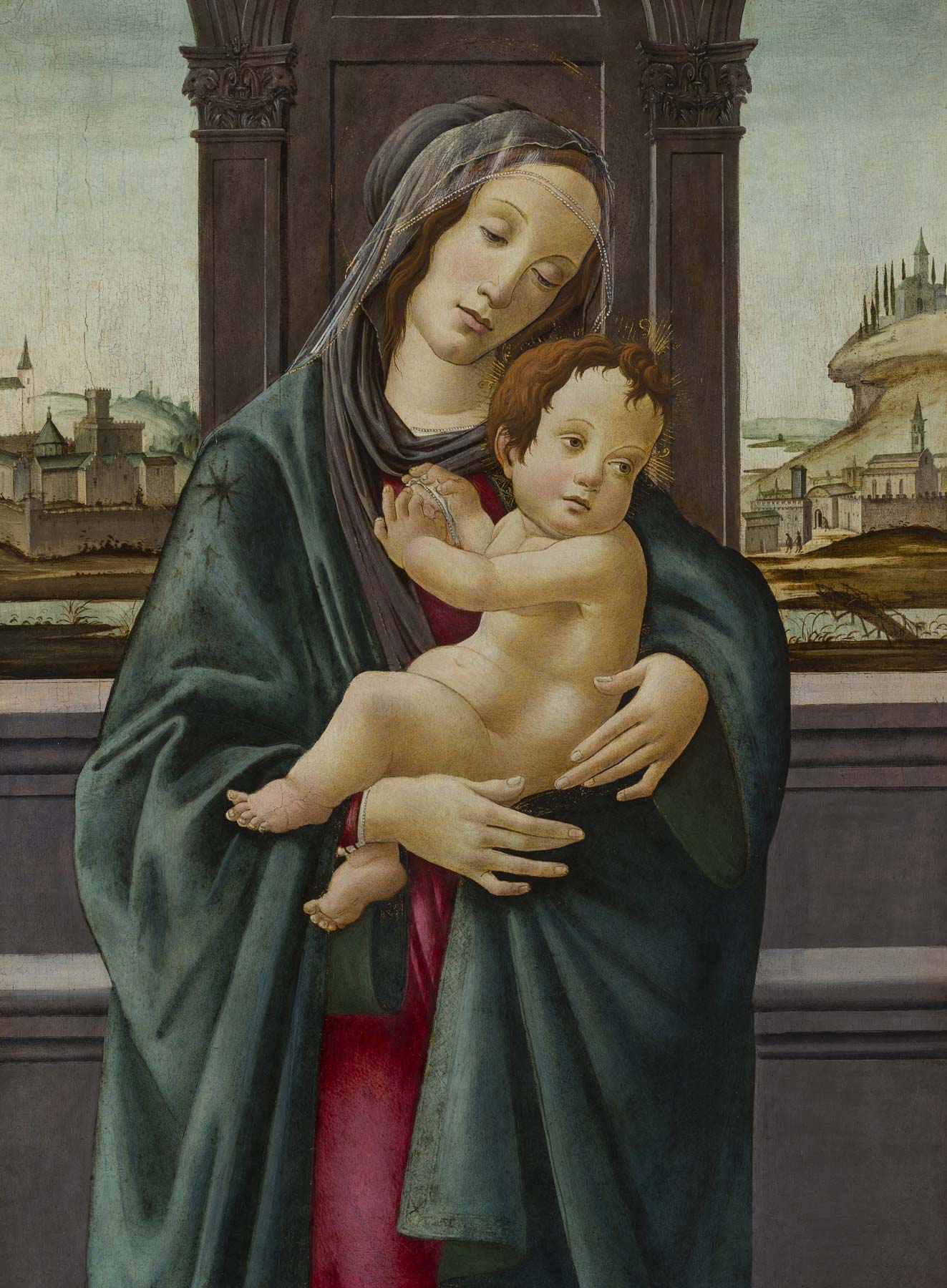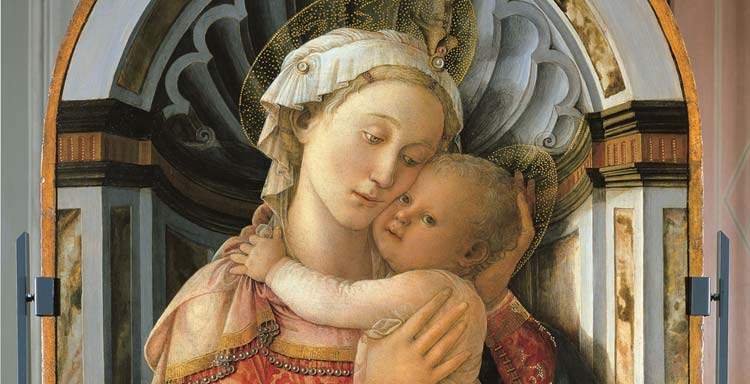The City of Milan’s Christmas exhibition at Palazzo Marino returns as it does every year. What is new this year is that the exhibition also extends to the other eight city halls to invite the whole city to discover art and beauty during the holiday season. Thus, from December 2 to January 15, 2023, the exhibition La Carità e la Bellezza (Charity and Beauty) is scheduled, with important loans from the museums of Florence, all made between the 14th and 15th centuries, set up in Palazzo Marino’s Sala Alessi immersed in a play of lights and textiles, and can be admired free of charge by Milanese and tourists.
The exhibition will see the Madonna and Child painted by Sandro Botticelli and now housed in the Stibbert Museum in Florence; Beato Angelico’sAdoration of the Magi, a precious tabernacle belonging to the Museum of San Marco; the Madonna and Child from Palazzo Medici Riccardi, created by Filippo Lippi; and Charity, a sculpture by the Sienese Tino di Camaino, from the Bardini Museum in Florence. In the city’s other eight town halls, area libraries will host as many important works from different institutions in the city starting Dec. 13, declining the theme of charity and beauty through four canvases from the 17th century and four from the 19th/20th century. The exhibition is curated by Stefano Zuffi and Domenico Piraina, while the organization is entrusted to the experience and professionalism of Civita Exhibitions and Museums.
The itinerary aims to testify to the fervent activity of assistance, mercy and charity towards the most needy and frail, which has been the hallmark of the city of Milan for centuries. In fact, in addition to loans from the GAM Galleria d’Arte Moderna di Milano and the Castello Sforzesco, the exhibition features works from a number of city welfare institutions that possess an artistic heritage testifying to the generosity of so many benefactors over the centuries: Fondazione Ca’ Granda Ospedale Maggiore Policlinico, Istituto dei Ciechi di Milano, Istituto Golgi Redaelli, Istituti Milanesi Martinitt e Stelline and Pio Albergo Trivulzio.




The exhibition opens with Charity, a splendid sculpture created by Tino di Camaino that stood for nearly two centuries at the entrance to the Baptistery of Florence Cathedral, a monument-symbol of Florentine identity, and was later housed at the Museo dell’Opera del Duomo. The style of the sculptor, a pupil of Giovanni Pisano, favors simple, solid forms set on geometric volumes. The allegorical figure of Charity is a woman caring for two children, breastfeeding them. Beato Angelico’s highly refined tabernacle, the jewel of the Museo di San Marco, was made around 1430 and is the result of a combination of techniques including painting, miniature, goldsmithing and carving. In addition to offering an exquisitely Christmas theme such as the adoration of the Magi, the tabernacle offers an essay in Beato Angelico’s sensitivity to colors, which sparkle preciously against the gold of the background. The work will arrive in the Sala Alessi on December 20, as it is currently on loan to the exhibition in San Giovanni Valdarno Masaccio and Angelico. Dialogue on Truth in Painting.
Filippo Lippi’s Madonna and Child, from Palazzo Medici Riccardi, is one of the last and most accomplished works on panel by the painter, who created it in the 1560s, just before moving to Spoleto to fresco the apse of the Umbrian city’s cathedral. The work bears witness to one of the most extraordinary phases of Florence’s political, social and artistic history: it is the Florence of humanism, which found in Filippo Lippi one of its earliest and most sensitive interpreters. Framed in an architectural niche set to the rules dictated by Leon Battista Alberti, the painting was until the early 20th century at the villa of Castelpulci, home of the Florence Psychiatric Hospital. The fourth work on display is the Madonna and Child painted around the year 1500 by Sandro Botticelli and now housed in the Stibbert Museum. After reaching the height of his fame and career during the time of Lorenzo the Magnificent, in the years following the death of his patron (1492) Botticelli was strongly impressed by the apocalyptic preaching of Girolamo Savonarola. A restlessness that is reflected in his artistic production in this last part of his life, which leaves his extraordinary painting talent intact but conditions his intense poetic rendering. A spectacular installation will set the stage for the sculpture and the three paintings, recreating the atmosphere of a basilica in a contemporary key.
The design of the exhibition, entrusted to architects Franco Achilli and Luigi Ciuffreda, is intended to be totally environmentally sustainable and completely recyclable, from the buildings to the coverings. The silk curtains that descend from the top of the Sala Alessi to enhance the preciousness of the works and evoke the interior of a cathedral are made of silk defined as “nonviolent” because it is obtained through a special process that is started only after the transformation of the silkworm into a butterfly, avoiding interrupting its metamorphosis. This preserves the life of the worms, which are not suppressed in order to obtain a greater quantity of yarn. The silk, at the end of the exhibition will be recovered and used to create a collection of clothes designed by Tiziano Guardini. The exhibition catalog, published by Skira, for the first time includes historical-artistic files of all the works displayed in the town halls.
“For the fourteenth edition of the Christmas exhibition at Palazzo Marino, Milan is offering citizens and tourists a new and fascinating project created in collaboration with several museums in Florence, a city with which we have established an intense artistic and cultural collaboration,” said Culture Councillor Tommaso Sacchi. “In addition to the exhibition in the Sala Alessi, which this year sees as many as four masterpieces, we wanted to bring art to all areas of the city, creating an artistic itinerary related to the theme of the exhibition in all the Milanese municipalities. A beautiful result, achieved thanks to the close collaboration with the municipalities themselves and with our district libraries, which will open their doors from December 13 to offer a new cultural experience in their spaces.”
Charity and Beauty, promoted by the City of Milan in collaboration with the City of Florence and the Metropolitan City of Florence, is a project conceived by Palazzo Reale in collaboration with Gallerie d’Italia, the Library Area and the Municipalities. The initiative is made possible thanks to the contribution of Intesa Sanpaolo, an institutional partner, which for years, together with the support of Rinascente, has flanked the Ambrosian Administration in generously donating this cultural event to the city.
Open: daily from 9:30 a.m. to 8 p.m., last entry at 7:30 p.m. Early closures: Dec. 7 at 12 noon (last entry 11:30 a.m.), Dec. 24 and 25 6 p.m. (5:30 p.m.). Regular openings Dec. 8, 25 and 26, Jan. 1 and 6. Free admission.
 |
| Milan, for Palazzo Marino Christmas exhibition important works from Florentine museums |
Warning: the translation into English of the original Italian article was created using automatic tools. We undertake to review all articles, but we do not guarantee the total absence of inaccuracies in the translation due to the program. You can find the original by clicking on the ITA button. If you find any mistake,please contact us.